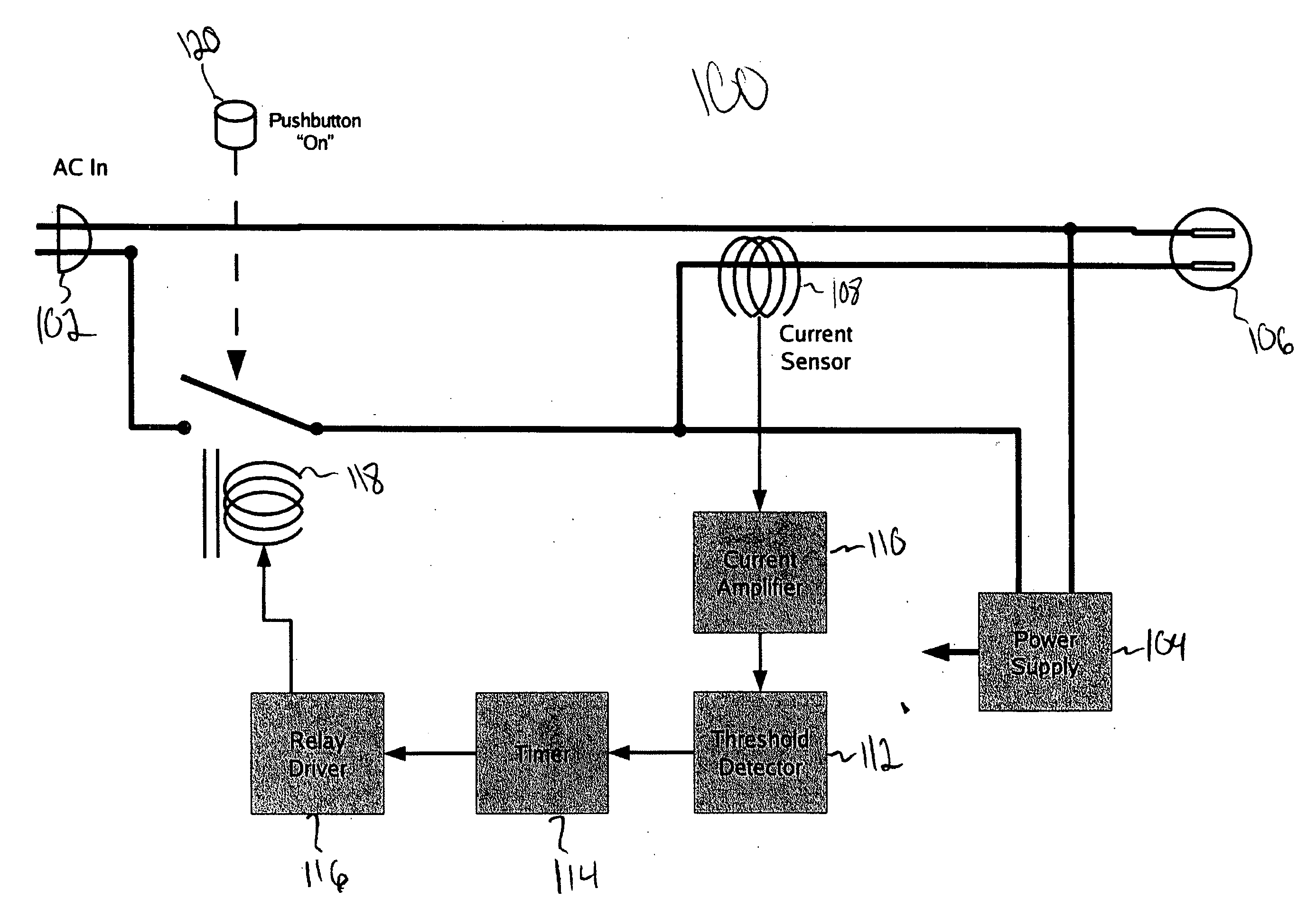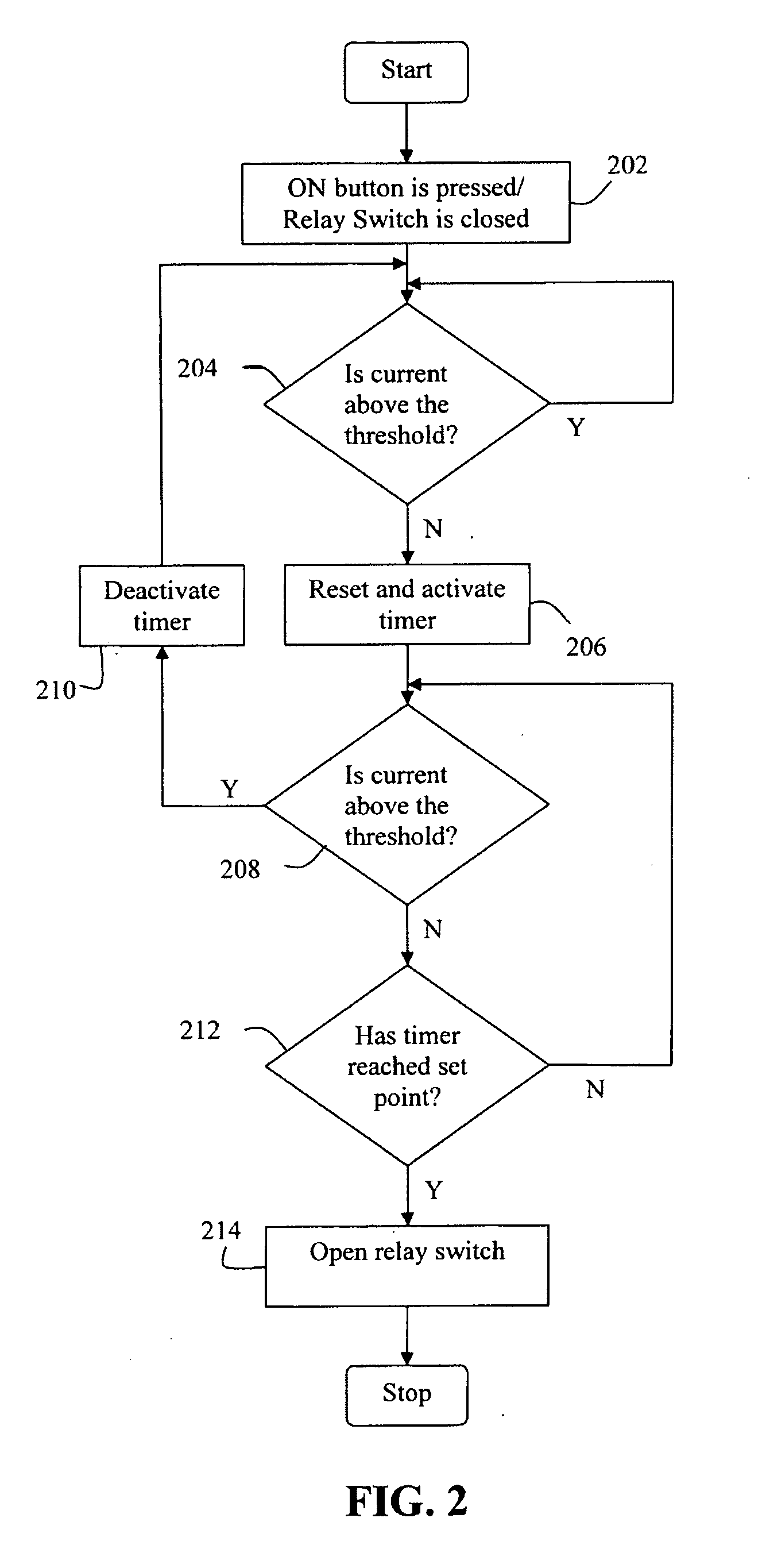Energy-saving electrical adaptor
a technology of electrical adaptors and adapters, applied in emergency protective devices, lighting devices, electric lighting sources, etc., can solve the problems of increasing strain on standard power grids, users often neglecting to take such steps, and periods of non-us
- Summary
- Abstract
- Description
- Claims
- Application Information
AI Technical Summary
Benefits of technology
Problems solved by technology
Method used
Image
Examples
Embodiment Construction
[0019]FIG. 1 illustrates a power connector 100 in accordance with one embodiment of the invention. In this embodiment, a relay is used in conjunction with a current sensor and a timer in order to completely deactivate an electrical device after a period of non-use, so that no power is drawn by either the electrical device or the power connector 100. As shown in FIG. 1, the power connector 100 includes an AC input 102 that is coupled to a power supply 104 and an AC outlet 106. A current sensor 108 is coupled to the AC outlet 106 so as to be operable to determine the current being drawn from the AC outlet 106. Connected to the current sensor 108 is a current amplifier 110, which is in turn connected to a threshold detector 112. The threshold detector 112 is coupled to a timer 114 so as to determine the period of time for which the current sensor 108 has detected a current that is below a predetermined threshold. The timer 114 is coupled to a relay driver 116, which is in turn coupled ...
PUM
 Login to View More
Login to View More Abstract
Description
Claims
Application Information
 Login to View More
Login to View More - R&D
- Intellectual Property
- Life Sciences
- Materials
- Tech Scout
- Unparalleled Data Quality
- Higher Quality Content
- 60% Fewer Hallucinations
Browse by: Latest US Patents, China's latest patents, Technical Efficacy Thesaurus, Application Domain, Technology Topic, Popular Technical Reports.
© 2025 PatSnap. All rights reserved.Legal|Privacy policy|Modern Slavery Act Transparency Statement|Sitemap|About US| Contact US: help@patsnap.com



